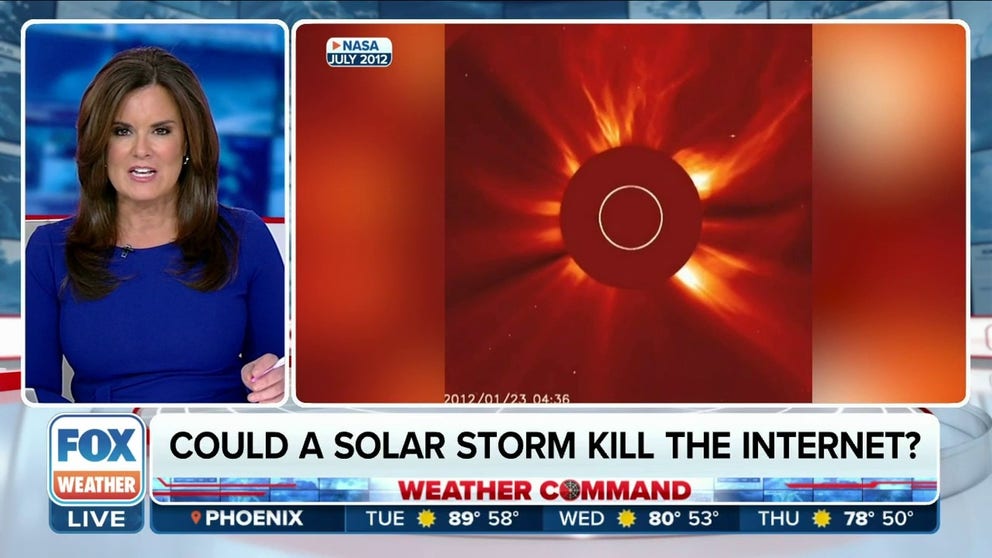Solar superstorm could 'wipe out the internet' for weeks or months, scientist says
Professor Peter Becker is working with a team whose goal is to create an early warning system for dangerous solar activity that could damage critical technology.
Could a solar super storm kill the internet?
Professor Peter Becker of George Mason University discusses the real threats of strong solar flares.
We may marvel at the Northern Lights, but that same solar storm energy could one day create what one researcher described as an "internet apocalypse."
"The internet has come of age during a time when the sun has been relatively quiet, and now it's entering a more active time," said Professor Peter Becker of George Mason University. "It's the first time in human history that there's been an intersection of increased solar activity with our dependence on the internet and our global economic dependence on the internet."
Becker is the lead investigator on a project with the school and the Naval Research Laboratory to create an early warning system.
NORTHERN LIGHTS ACTIVITY TO INCREASE, INCLUDE AURORAS FURTHER SOUTH DUE TO INCREASING SUN ACTIVITY
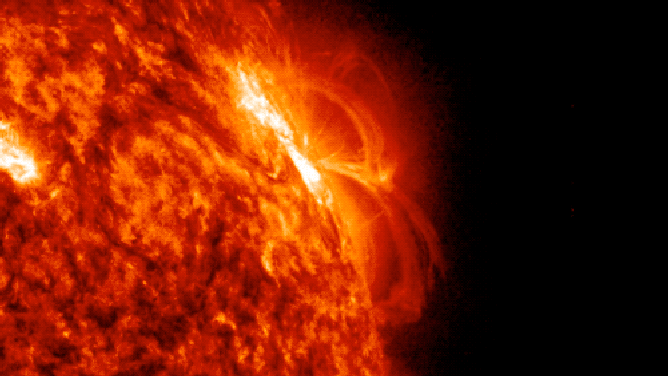
File: A solar flare erupting on March 3, 2023. The image shows a subset of extreme ultraviolet light that highlights the extremely hot material in flares, and which is colorized in orange.
(Solar Dynamics Observatory / NASA)
What can a solar super storm do to Earth?
"There have been a lot of (solar) flares," Becker said. "Flares are when the sun brightens, and we see the radiation, and that's kind of the muzzle flash. And then the cannon shot is the coronal mass ejection (CME). So, we can see the flash, but then the coronal mass ejection can go off in some random direction in space, but we can tell when they're actually going to head towards Earth. And that gives us about 18 hours of warning, maybe 24 hours of warning, before those particles actually get to Earth and start messing with Earth's magnetic field."
Large blobs of plasma, or superheated matter, fly through space in a CME. A percentage hit the Earth, which distorts our planet's magnetic field. That third prong on the electric plug, which usually gives excess electrical charges a safe place to go, becomes "like a big electrical circuit."
SOLAR STORMS CAN GREATLY ALTER BIRD MIGRATIONS, REPORT SAYS
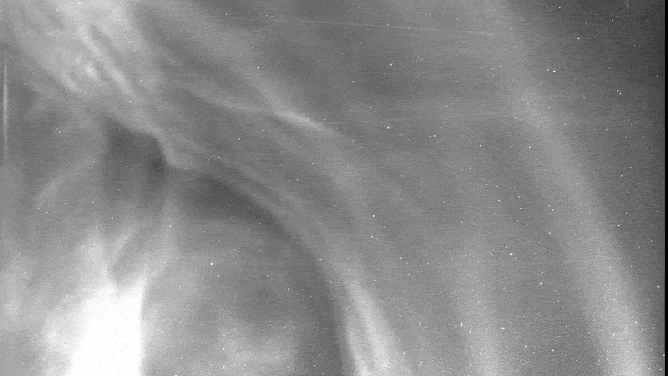
File: Parker Solar Probe’s Wide Field Imagery for Solar Probe (WISPR) camera observes as the spacecraft passes through a massive coronal mass ejection on Sept. 5, 2022.
(NASA / Johns Hopkins APL / Naval Research Lab / NASA)
"And then you get this kind of insidious thing where you could actually get current from ground," Becker said. "So everybody thinks, 'Oh, my computer's grounded, I'm okay,'" but in an event like this, if you drive inductive currents to the surface of the Earth, it can almost work backwards, and you can end up actually frying things that you thought were relatively safe."
The power grid, satellites, underground fiber optic cable with copper sheaths, navigation and GPS systems, radio transmitters and communications equipment are all vulnerable.
It has happened before
It has happened before. Becker points to the Carrington Event in 1859. That was the last time a CME reached Earth.
THE DAY THE NORTHERN LIGHTS COVERED THE PLANET: HISTORY OF EARTH'S GREATEST SOLAR STORMS
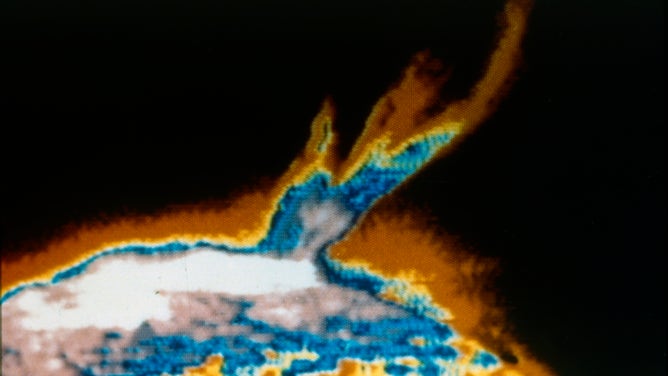
File: Thermal image of an eruption or flare on the surface of the Sun. Solar flares are giant explosions on the Sun that send energy, light and high speed particles into space.
(Heritage Space/Heritage Images)
"It actually took out the telegraph system, sparks were literally flying off the telegraph lines," Becker said. "Some operators got electrocuted because the wires ended up carrying high voltage, which they were never supposed to do, but the magnetic field variations became so strong it almost became a generator system and drove these currents down telegraph wires."
The heavy-duty wires of the telegraph were robust compared to the fragile electronics of today, he said.
"So you lay that on top of the internet with its very delicate electronics, you're talking about something that could really fry the system for a period of several weeks to months in terms of the time it would take to repair all the infrastructure – all of the electronic switches, all of these closets of electronics in all these office buildings," Becker said. "That could all be fried. So we're talking pretty major. And it's not just communications. It's economic disruption, too, obviously."
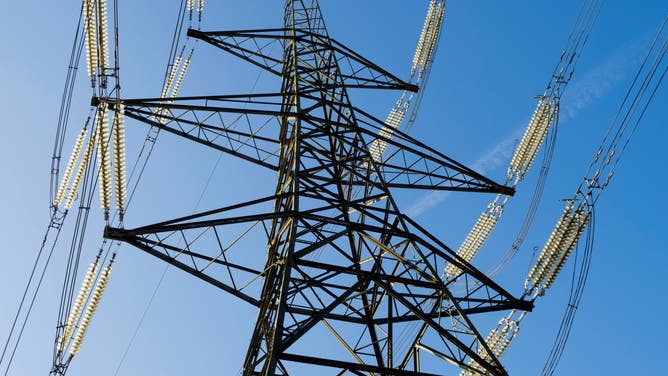
File: Electric pylons.
(Planet One Images/UCG/Universal Images Group / Getty Images)
An economic disruption to the tune of $10-$20 billion per day to the U.S. economy alone, Becker estimated.
The solar cycle is peaking making solar storms more plentiful
Tree rings and ice cores are evidence of much larger super storms in the past. About 14,000 years ago, a solar flare, possibly hundreds of times stronger than the Carrington flare, impacted Earth.
NOAA forecast the current solar cycle to ramp up and peak in 2024.
NOAA PREDICTS STRONGER PEAK OF SOLAR ACTIVITY IN 2024 THAN ORIGINALLY ANTICIPATED
Becker said predicting solar storms is like predicting earthquakes – we just don't have control over the situation. He said that the odds are about 10% that over the next decade, "something really large is going to happen that could potentially wipe out the internet."
How can we protect electronics?
So he and his team are watching the sun and modeling flares. Flares, he said, reach Earth in 8 minutes. That sets the clock ticking for the possible magnetic field disruption in 18 to 24 hours.
"If we have a warning, every minute counts because you can put satellites in safe mode. You can take transformers off-line from the grid, so they don't fry," Becker said. "So there's things you can do to mitigate the problem. And then, more long term, you're talking about hardening the internet. And that's, of course, an economic challenge because it's sort of like an insurance policy. You may never need it, and it would cost trillions to really harden the system."
He said most large corporations don't have the economic incentive to harden their system at this point.
